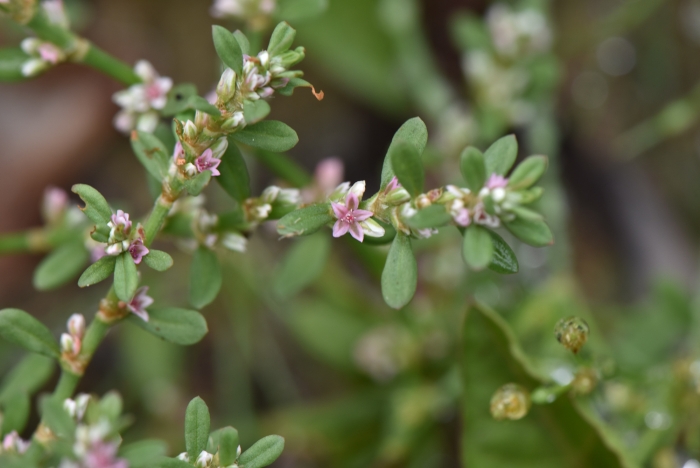Common Knotweed
(Polygonum plebeium)
Common Knotweed (Polygonum plebeium)
/
/

Cheng-Tao Lin
CC BY 4.0
Image By:
Cheng-Tao Lin
Recorded By:
Copyright:
CC BY 4.0
Copyright Notice:
Photo by: Cheng-Tao Lin | License Type: CC BY 4.0 | License URL: http://creativecommons.org/licenses/by/4.0/ | Rights Holder: Cheng-Tao Lin | Publisher: iNaturalist | Date Created: 2020-03-31T13:49:38-07:00 |

























Estimated Native Range
Summary
Polygonum plebeium, commonly known as common knotweed, is an annual herb that is native to South Asia, including India, and Madagascar. It has also been introduced to the United States and Australia, where it often becomes invasive. This plant typically grows in disturbed sites, road sides, and waste areas within its native range. It has a sprawling habit and can reach a height of up to 60 cm. The leaves are small, oval to lance-shaped, and the plant produces tiny white to pinkish flowers from summer to early autumn. The flowers are not particularly showy, but they can form dense clusters that cover the plant.
Common knotweed is known for its ability to thrive in poor soils and its resilience to trampling, making it a tough ground cover in urban settings. However, due to its invasive nature, it is not recommended for intentional cultivation in gardens. It prefers full sun to part shade and can tolerate a range of soil types, provided they are well-drained. In areas where it is not invasive, it may be used for erosion control or as a filler plant in tough urban environments.CC BY-SA 4.0
Common knotweed is known for its ability to thrive in poor soils and its resilience to trampling, making it a tough ground cover in urban settings. However, due to its invasive nature, it is not recommended for intentional cultivation in gardens. It prefers full sun to part shade and can tolerate a range of soil types, provided they are well-drained. In areas where it is not invasive, it may be used for erosion control or as a filler plant in tough urban environments.CC BY-SA 4.0
Plant Description
- Plant Type: Herb
- Height: 0.5-2 feet
- Width: 1-2 feet
- Growth Rate: Rapid
- Flower Color: White, Green
- Flowering Season: Summer, Fall
- Leaf Retention: Deciduous
Growth Requirements
- Sun: Full Sun, Part Shade
- Water: Medium
- Drainage: Medium, Slow
Common Uses
Erosion Control, Low Maintenance
Natural Habitat
Native to South Asia, including India, and Madagascar, typically found in disturbed sites, road sides, and waste areas within its native range
Other Names
Common Names: Small Knotweed, Knotweed, Rupturewort, Common Knotgrass
Scientific Names: , Polygonum plebeium, Avicularia indica, Persicaria minutiflora, Pleuropteropyrum minutiflorum, Polygonum alpestre, Polygonum alpestre, Polygonum anomalum, Polygonum aviculare, Polygonum aviculare var. minutiflorum
GBIF Accepted Name: